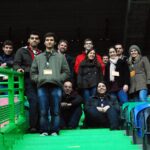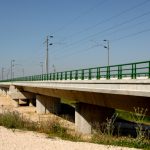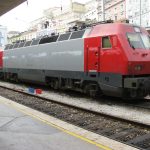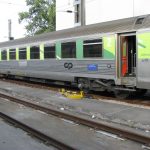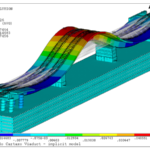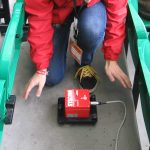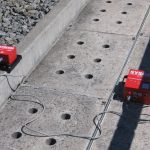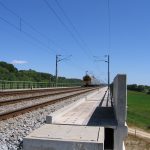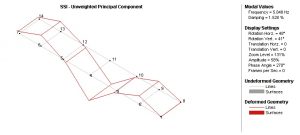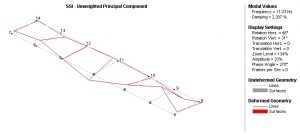Introduction
The objective of the Smartrack project is to understand the dynamic interaction between highspeed trains and railway tracks. In this project I had the pleasure to collaborate with a number of professionals across both academia and the industry. In particular, I would like to acknowledge Jose Varandas, Zuzana Dimitrovova, Nuno Lopes, Ruben Silva and Corneliu Cismasiu.
During this period, I have developed a finite element (FE) model of an actual railway viaduct under train passage with ANSYS/LS-DYNA. Additionally, a factorial analysis (implemented with MATLAB) was applied to this model, in order to quantify the uncertainty that is propagated from its parameters to its dynamic response.
FE modelling and calibration
The figure below represents an LS-DYNA simulation of the dynamic response of the viaduct when excited by a locomotive train. Note the soil structure interaction at the base of the concrete columns, and the vibrations at the sides of the modelled portion of surrounding soil. The nonlinear behaviour of ballast, and the absorbing soil boundaries are other interesting modelling aspects.
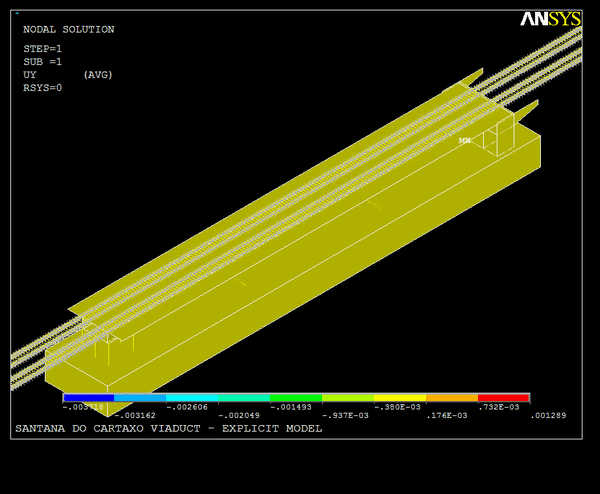
In addition to the dynamic simulation, a modal analysis has been performed, and simulated mode shapes have been obtained (see below)
For validation of this model, in-situ measurements were performed with velocity sensors in collaboration with the industrial partner REFER EP. The calibration and validation of the model (through a modal identification process) was accomplished with Artemis. All of the above work was published in international scientific journals and conference proceedings.
![]()
